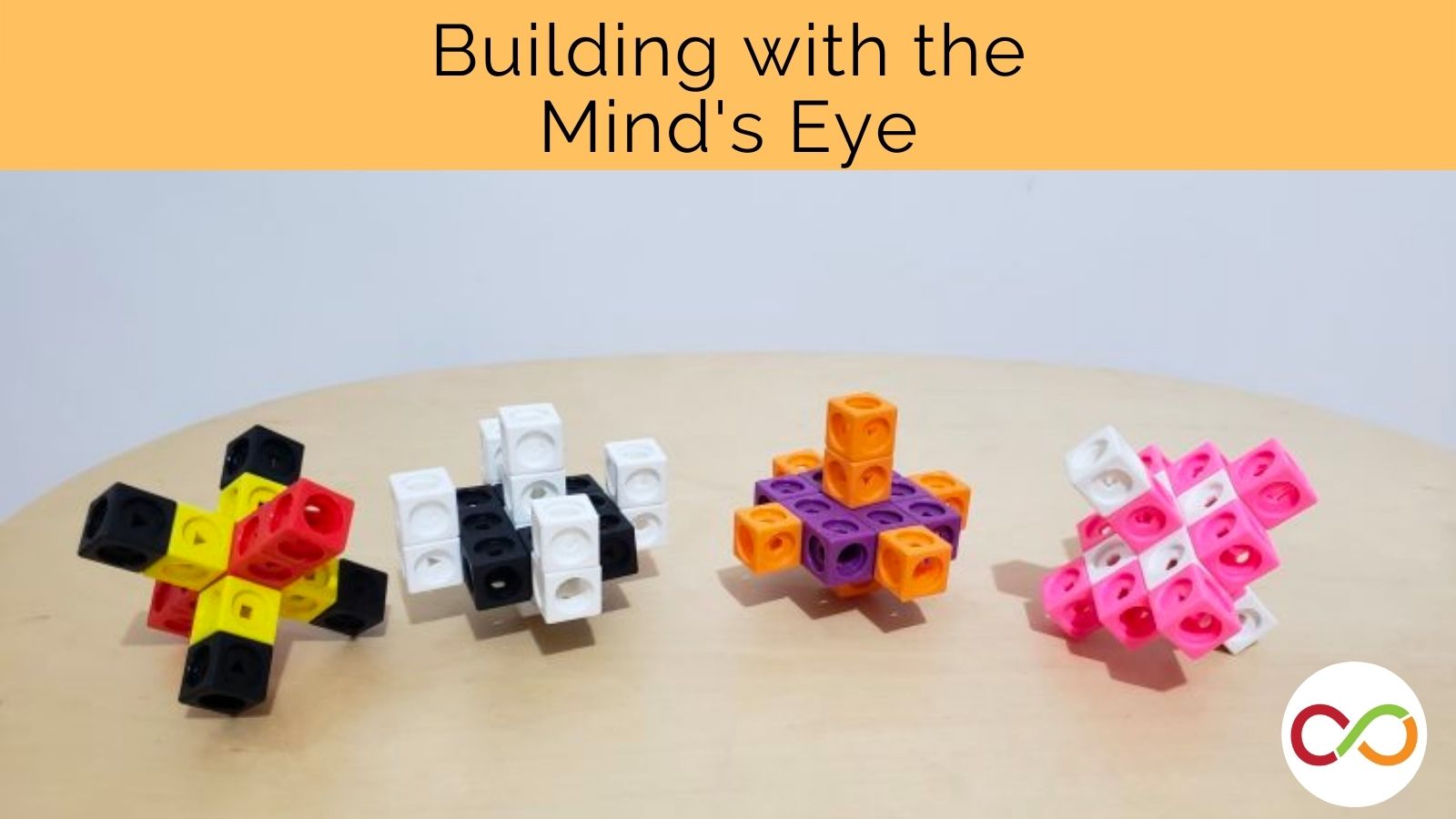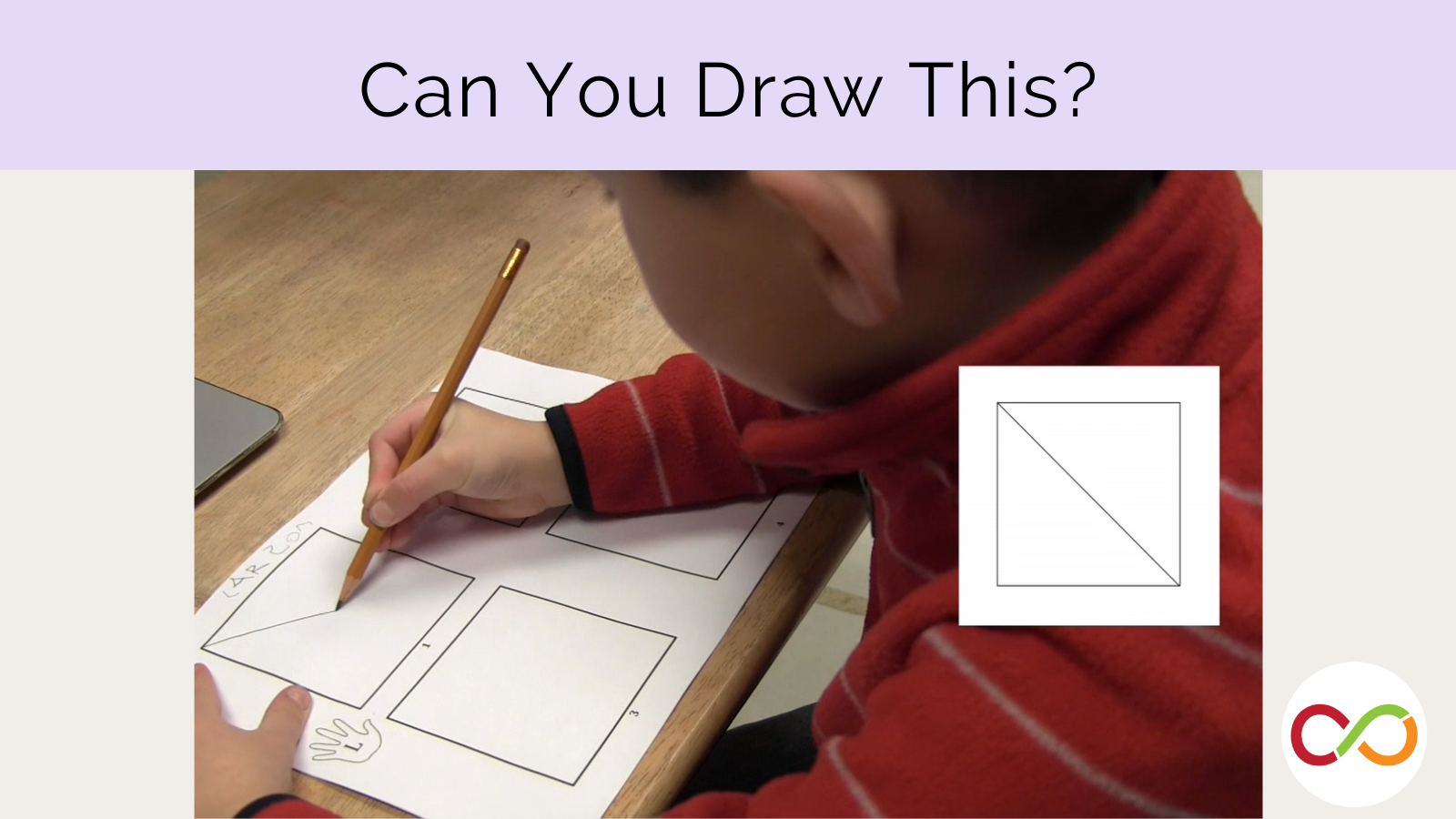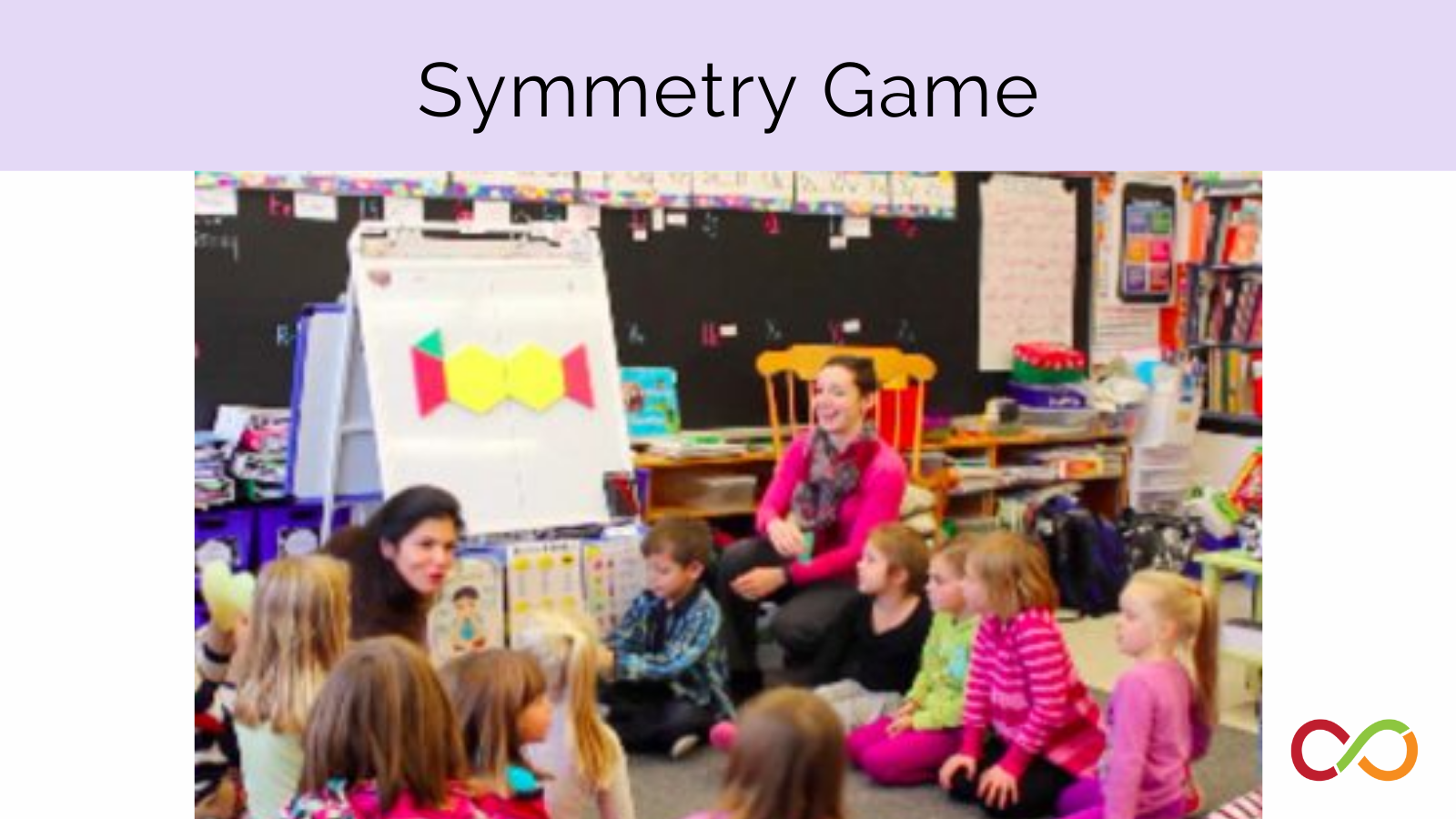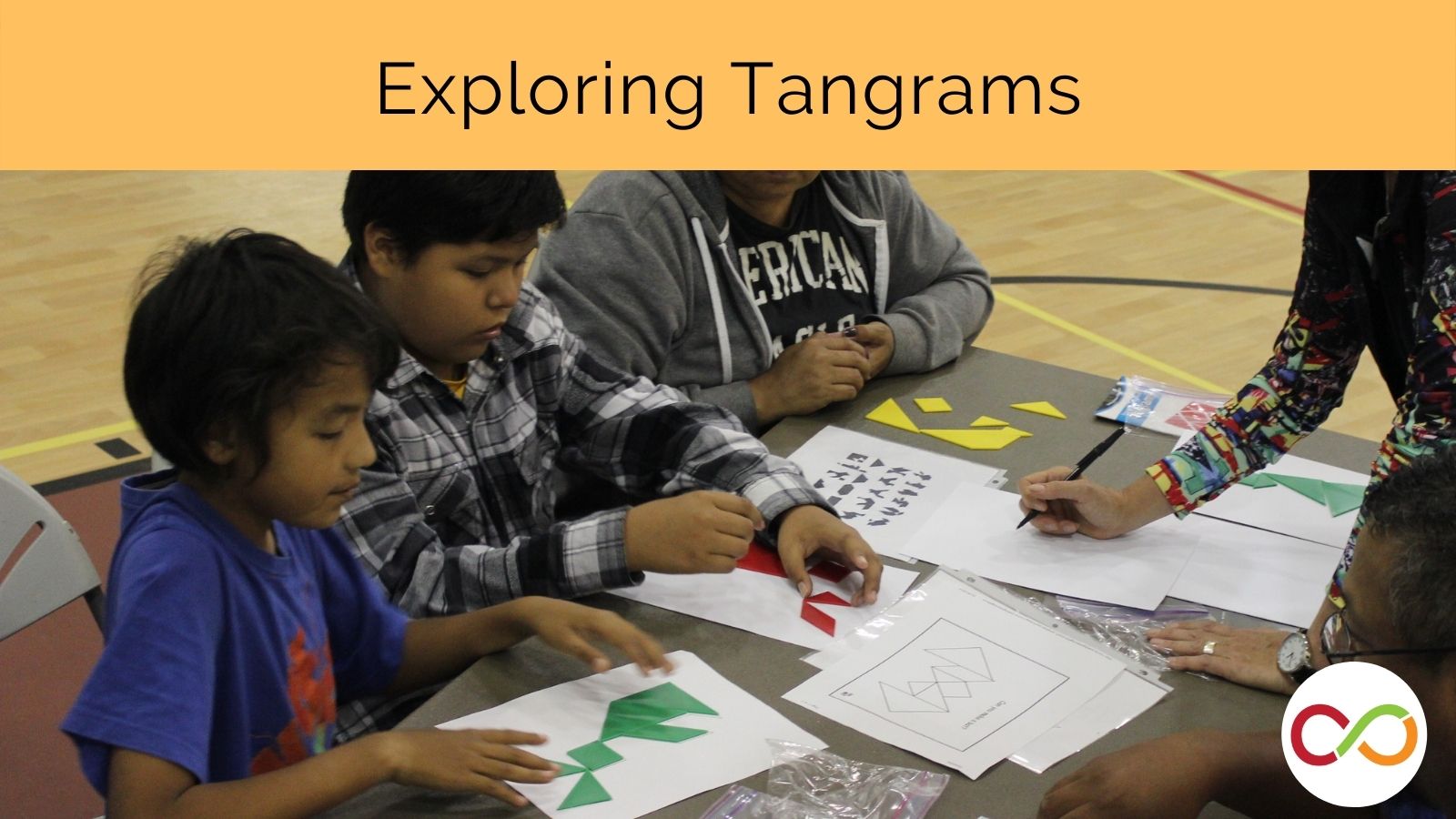Joan Moss and Zack Hawes explain the benefits of focusing on spatial reasoning in early years math with lessons for teachers to explore
When Ontario was introducing full-day kindergarten in 2010, Robertson Program Research Lead Dr. Joan Moss was investigating and developing ways to enhance mathematics education in the early years. The project, Math for Young Children (M4YC), focused on investigating and developing ways to enhance mathematics education in the early years.
Many studies pointed to the importance of mathematics learning in the early years. Greg Duncan, distinguished professor of educational policy, reported that early math skills, even more than literacy skills, were the best predictor of later academic success1. This was an important moment in education to re-think and invigorate the early math curriculum.
“Math in early years classrooms typically focused on the development of number sense, despite calls from Ontario’s Ministry of Education, and important bodies like the National Council of Teachers of Teachers of Mathematics,” says Moss, now Professor Emerita at the Ontario Institute for Studies in Education (OISE), University of Toronto. “They urged that equal time and focus be given to the teaching of geometry and measurement — topics grounded in spatial reasoning and thinking.”
At the same time, surveys of teachers’ practices in Ontario revealed that, of all the five strands in the math curriculum, measurement and geometry received the least amount of classroom time. Ontario was not alone: this lack of attention to spatial topics and spatial thinking was pervasive internationally2. Moreover, when spatial topics were taught, the focus tended to be limited, often restricted to labeling and sorting geometric shapes.
“Our goal with M4YC was to collaborate with teachers and school board math consultants to test and develop resources that focused on practical ways to bring spatial reasoning into the classroom,” says Moss. “We wanted to create classroom activities and resources that develop spatial skills in a playful, engaging ways.”
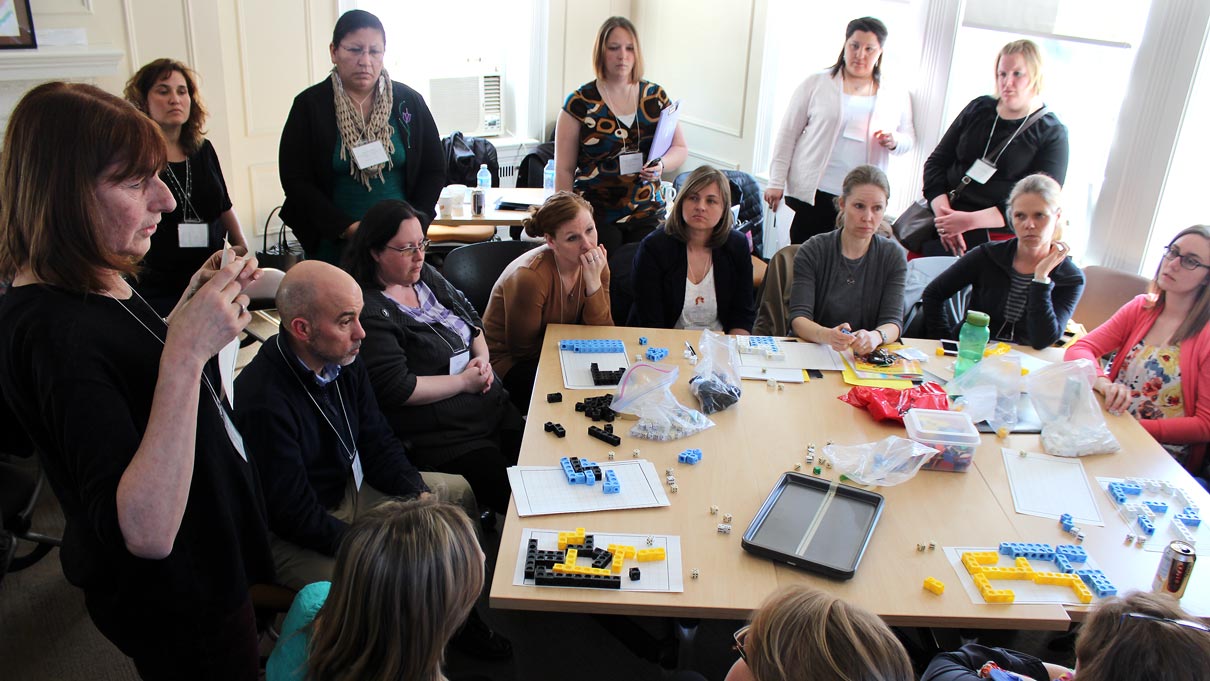
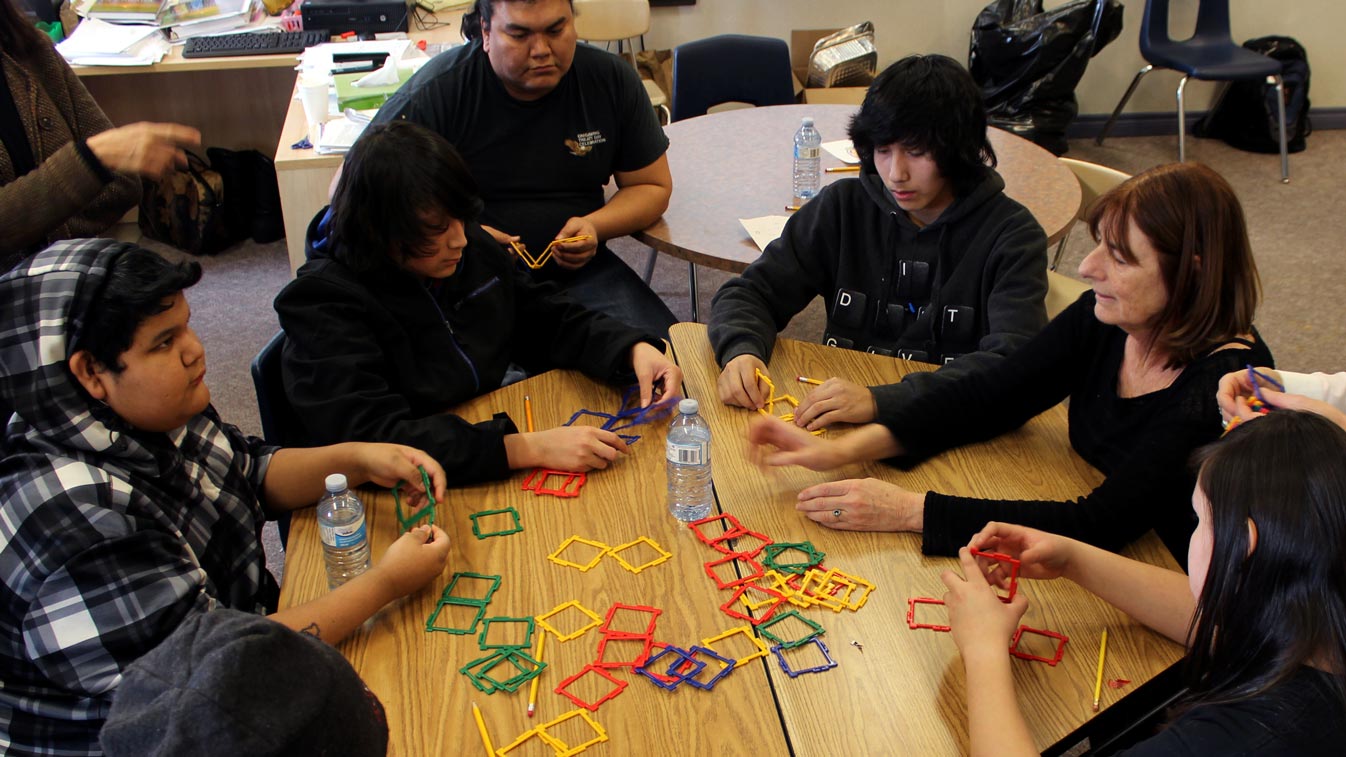
Dr. Joan Moss works on spatial activities with educators from Kawartha Pine Ridge District School Board, and with students from Mikinaak Onigaming School.
TRY THESE ACTIVITIES
SPATIAL REASONING: FIRST STEPS FOR ROBERTSON
Moss and her M4YC colleagues’ early spatial reasoning research contributed to The Robertson Program’s professional development program, as she and her team continued to work with teachers and students in Toronto, Peterborough and Fort Frances, Ontario. These collaborations resulted the development of engaging, purposeful lessons and activities that support and stimulate spatial thinking in young children. The Robertson Program features many of these lessons in our online library of mathematics lessons.
WHAT IS SPATIAL REASONING?
“Spatial reasoning is the capacity to generate, form, recall, maintain and manipulate a visual-spatial image in the mind,” says Dr. Zack Hawes, current Robertson research lead and Assistant Professor in the Master of Arts in Child Study and Education at JICS/OISE. “Create some kind of visual entity in your mind and then mentally manipulate or transform it in some way – that’s spatial reasoning.”
A simple example is the comparison of two different shapes – a square and a rectangle. It’s a task that can be performed at the kindergarten level.
“You might ask a child, ‘How are these two shapes similar? How are they different? Which one takes up more space?” he says. “You can take the formulaic approach and actually measure the length and width of the objects. Or, you can do a spatial transformation – cut the rectangle in half and compare to see if the two are same-sized squares.”
Both methods are equally mathematical.
“It’s another approach to math that is often times neglected – even though it’s right there,” Hawes says.
During his own research, Hawes has watched students correctly count the marks on a ruler without understanding what they’re measuring.
“This goes unnoticed in early years math education because the emphasis is on counting,” Hawes says. “Children are asked and encouraged to count without being asked to pay attention to what it is that’s being counted. In the case of measurement, you’re wanting to count the spaces, the number of spatial intervals.”
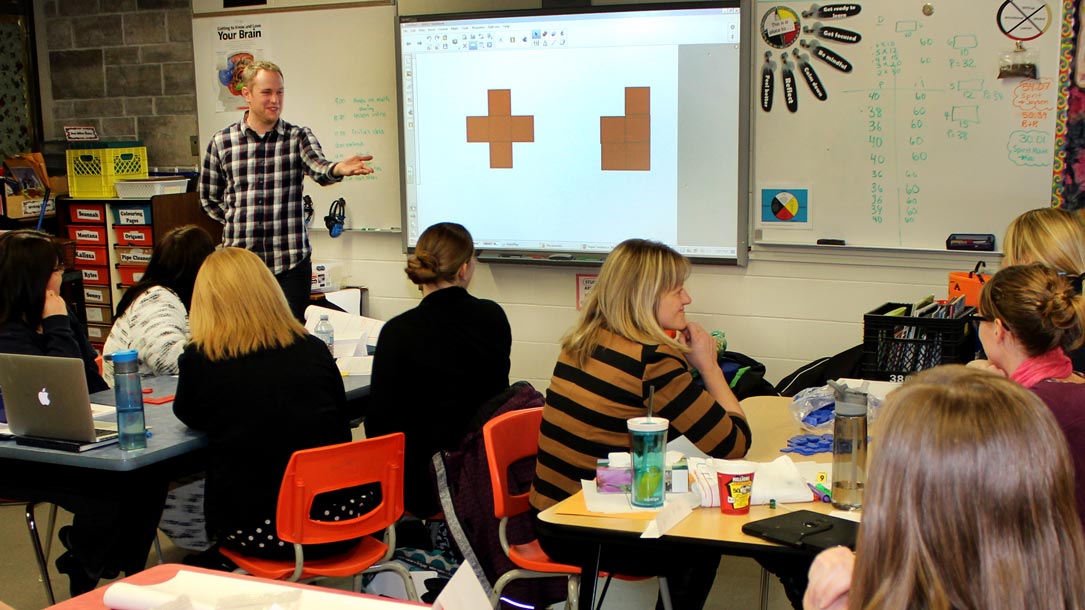
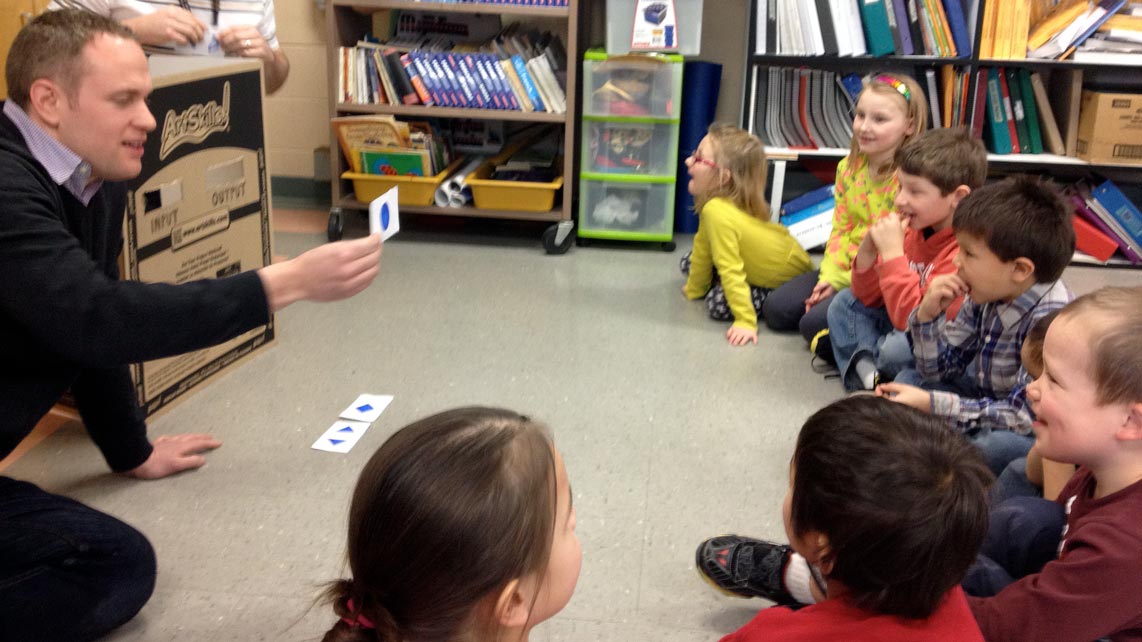
Dr. Zack Hawes works on spatial activities with educators and students from the Rainy River District School Board.
RECOMMENDED RESOURCES
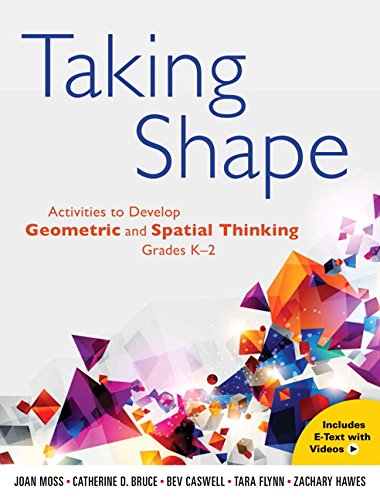
Taking Shape: Activities to Develop Geometric and Spatial Thinking
Games and challenges using ready-at-hand materials provide entry points to key areas of spatial cognition, such as visualization and mental manipulation.
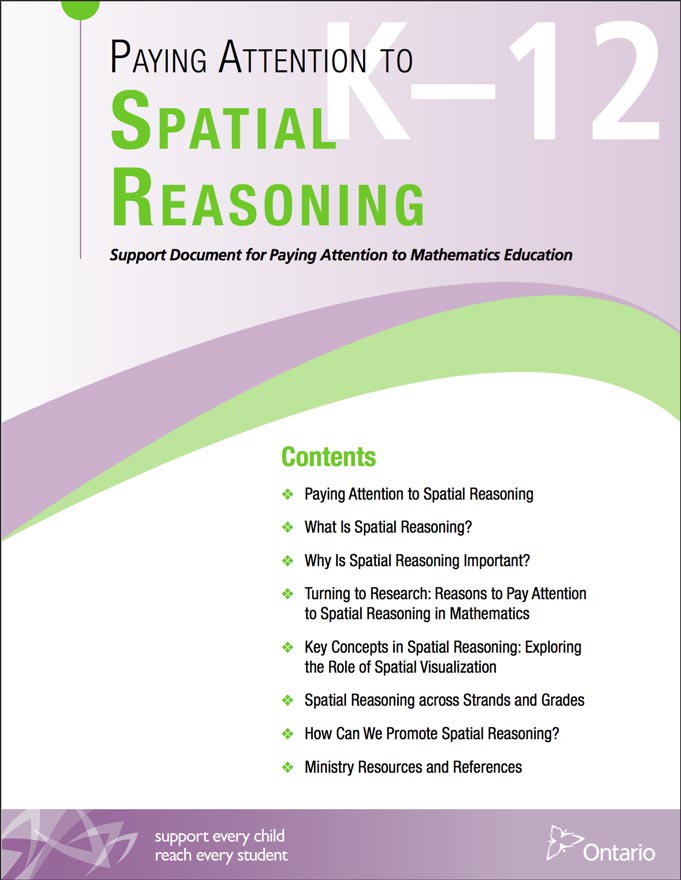
Paying Attention to Spatial Reasoning
Argues for the essential role of spatial skills in understanding number, arithmetic, word problems, measurement, geometry, algebra and calculus
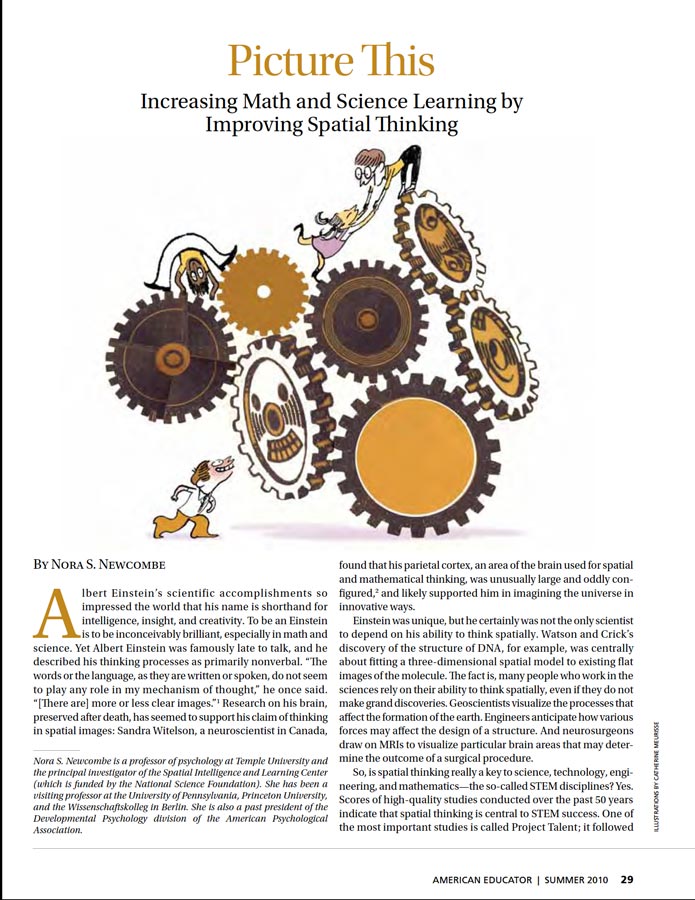
Picture This! by Nora Newcombe
Connects cognitive psychologists’ studies of spatial ability with recommendations for improving spatial thinking in preschool and elementary students.
AN INTERVIEW WITH DR. JOAN MOSS
In this interview with The Learning Exchange, Dr. Joan Moss discusses the importance of spatial reasoning in early years’ math education.
She addresses how spatial reasoning:
– Develops geometric language
– Encourages relational thinking
– Encourages classification by attributes
– Explores the relationship between shapes
– Requires composing and decomposing
– Is accessible to all students
REFERENCES

Author
Zachary Pedersen
The Robertson Program

